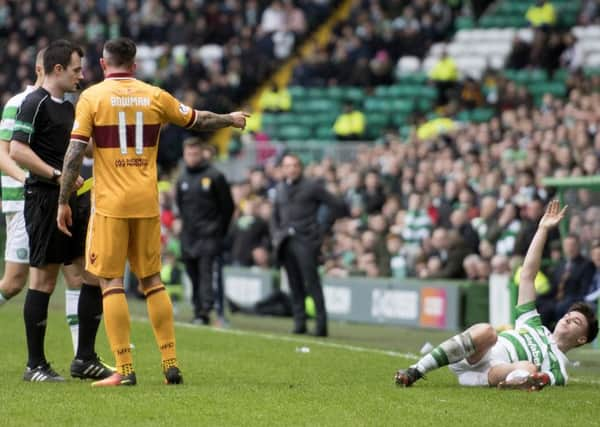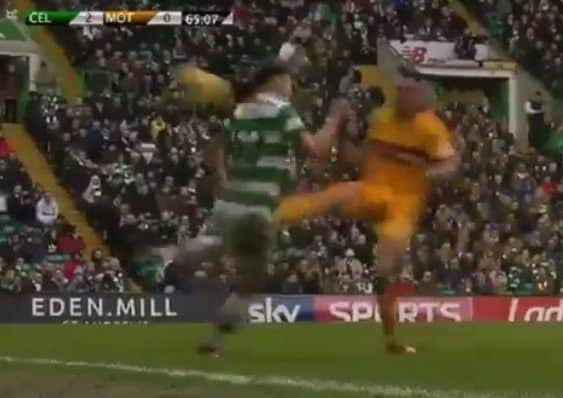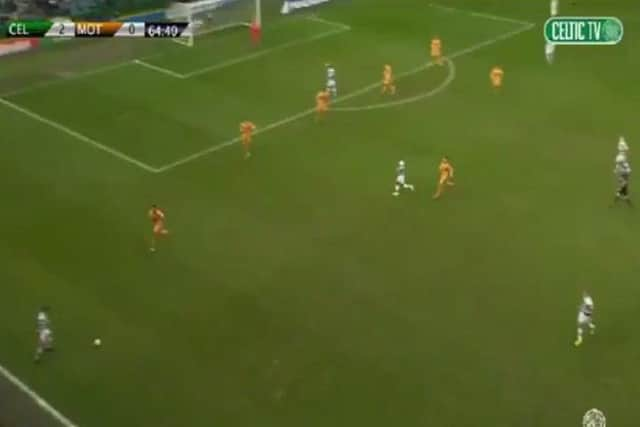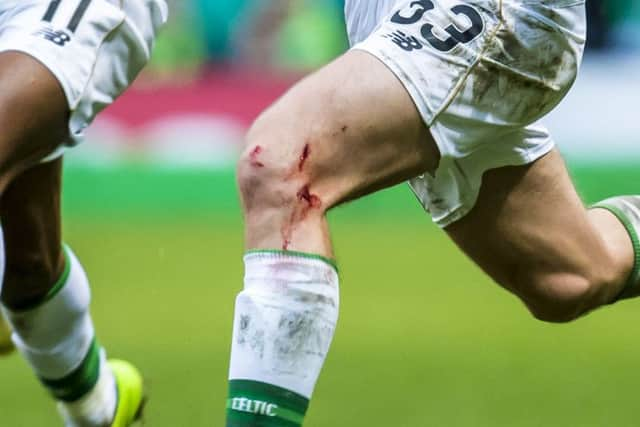Why referee didn't show red card for foul on Kieran Tierney


First of all, there’s little doubt Bowman should have been sent off. He goes in with a straight leg (Image One), at pace, and catches Tierney on the left knee. It could have been much, much worse for the young Celtic defender.
Advertisement
Hide AdAdvertisement
Hide AdIt’s similar to Michael O’Halloran’s tackle in the recent game between Motherwell and Rangers, which earned the attacker a red card. It’s a player going in for a bouncing ball with his studs showing and catching his opponent. The only difference between the two is that Bowman gets the ball. However, that’s fairly irrelevant in this case. It is both endangering an opponent and use of excessive force, which is the criteria referees look for in red card challenges.


So why wasn’t it a sending off? Probably because, in real time, it’s difficult to tell how much contact there is. Going back to the O’Halloran challenge, when he collided with Carl McHugh, the Motherwell player was going at pace before he was stopped in his tracks by the contact. The head-to-head nature made it much clearer to the referee how much force was put into the tackle.
In this instance, Tierney is turning as Bowman rakes his studs down his knee, making the force of the contact less obvious. There’s also the positioning of referee Don Robertson to consider. Bowman has his back to him, so the official may have been unable to see Bowman extending his leg. And though he has a clear view of the coming together, he’s also a fair distance away (Image Two). The play had just been moved wide and he would have anticipated it quickly coming back to the centre.
It is important to note that he does blow for a foul immediately and reaches for his yellow card. He knew there was a recklessness to the challenge. But reckless challenges are only punishable with cautions if the referee does not believe there was excessive force.
While referees shouldn’t be influenced by those around them, they are only human, and it’s more likely a red card would have been given had any of the Celtic players reacted with anger to the challenge. The fact they didn’t may suggest that they, like the referee, didn’t realise how bad the challenge was at full speed.


There will be those who’ll wonder why Robertson didn’t give a red after seeing the extent of the damage (Image Three). He brought his yellow card out, but he didn’t show it to Bowman until after he’d had a close up look at Tierney, and presumably saw the injury.
Though this can and does happen, it doesn’t sit well with some referees. Innocent challenges can cause bad injuries; shocking tackles can cause no injury. It’s not always a reliable indicator with regards to dangerousness or force.
All in all, while Robertson got it wrong it’s not a “simple decision” as the Celtic TV commentators insisted. Even Tom Boyd, the analyst for Celtic’s coverage of the game, thought it “may be a booking” prior to seeing the replays.
Advertisement
Hide AdAdvertisement
Hide AdHow is it not possible for commentators, and the Celtic TV duo are far from being the only offenders, to realise that if they are unable to decipher exactly what happened on first viewing then the referee is probably having similar difficulty? You see it all the time: commentator sits on the fence and then goes in two-footed on the ref once he’s had the benefits of slow-motion replays, sometimes only realising the true nature of an incident on the third or fourth showing.


• Craig Anderson is a former fully qualified referee. He is also the man behind SPL Stats on Twitter.
SEE ALSO